Content
Equilibrium in Three Dimensions
Reactions at Supports and Connections
Equilibrium in Three Dimensions
In general, the conditions for the equilibrium of a rigid body is.
 and
and

For three dimensional problems, the resultant can be decomposed into three components. Imply

Three translational and three rotational motion are needed for determining a three dimensional structure is in static equilibrium state or not.
In other words, the possible forces and moments due to an applied action or a reaction in a three dimensional structure are three rectangular forces and three rectangular moments, or one resultant force and one moment in space.
Since there are only six equations obtained from the equilibrium equations of a rigid body in three dimenstion, no more than six unknowns can be determined by the system of six equations.
Reactions at Supports and Connections
In order to construct the free body diagram for analysing the equilibrium of rigid body in three dimensions, the types of reactions at supports and connections should be evaluated first. The types of reactions at supports and connections can be divided into three types:
-
Reactions equivalent to three force components and three couple components
For a fixed support, no translational motion and rotation motion is allowed for the free body to move and thus the free body is fully constrained.
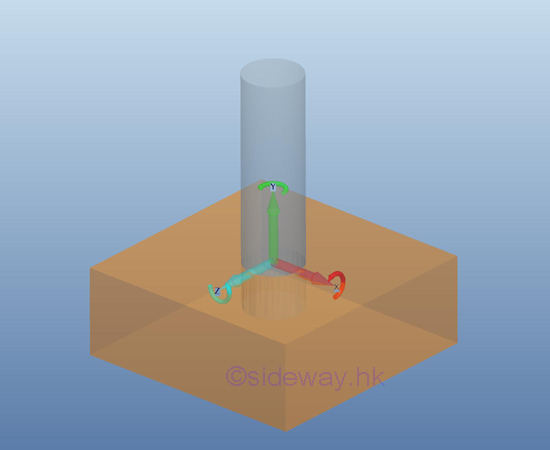
-
Reactions equivalent to three force components and two couple components
For an axial thrust and radial load support or connection, the rotational motion in one dimension is enabled by equipping with a fictionless hinge or pin, only two couple is reacted by the support or connection on the free body. But, the translational motion is stopped by the reaction force of the hinge support.
However, when using this type of support or connection in the design, the other two couples may not always exist in normal operation.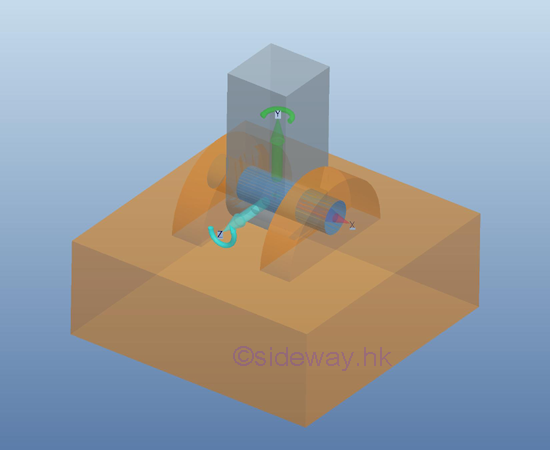
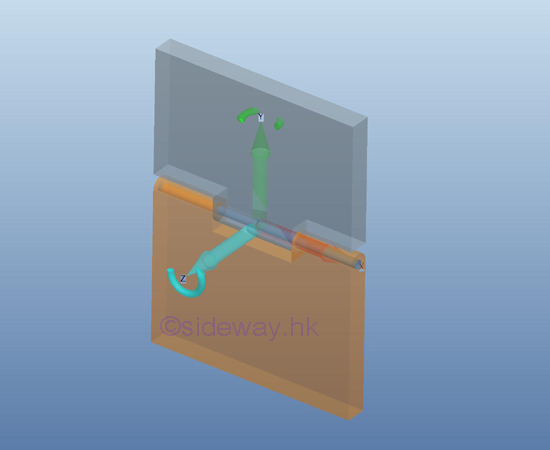
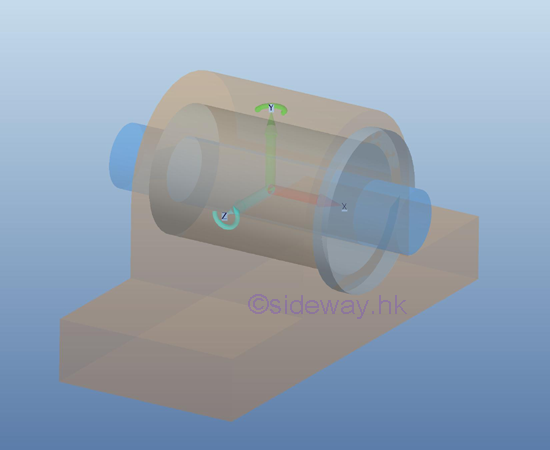
-
Reactions equivalent to three force components and one couple component
For an universal joint, the rotational motion in two dimensions is enabled by equipping with a pair of hinges oriented at 90 degree to each other, only one couple is reacted by the support or connection on the free body. But, the translational motion is stopped by the reaction force of the hinge support.
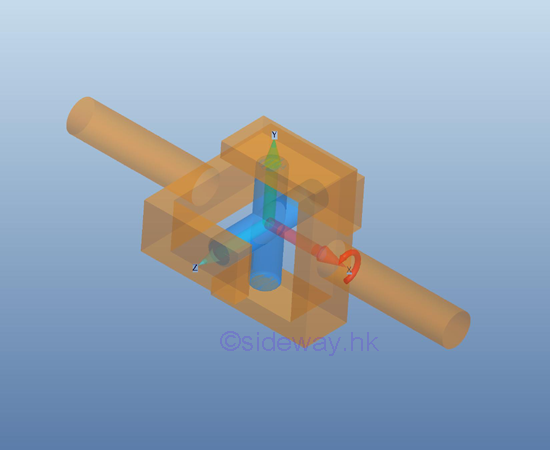
-
Reactions equivalent to three force components
For a ball and socket joint, the free rotational motion in three dimensions is enabled by equipping with a ball in a frictionless socket, or a free end on a rough surface, no couple is reacted by the support or connection on the free body. But, the translational motion is stopped by the reaction force of the socket support or the friction force generated by the rough surface.

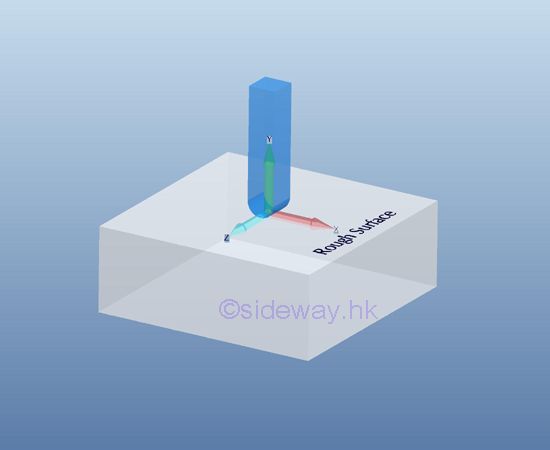
-
Reactions equivalent to two force components and two couple components couple components
For a radial load support or connection, the rotational motion in one dimension is enabled by equipping with a fictionless hinge or pin, only two couple is reacted by the support or connection on the free body. Because there is no axial thrust, the axis is free to move on the axial direction, and only two translational motions are stopped by the reaction force of the hinge support.
However, when using this type of support or connection in the design, the other two couples may not always exist in normal operation.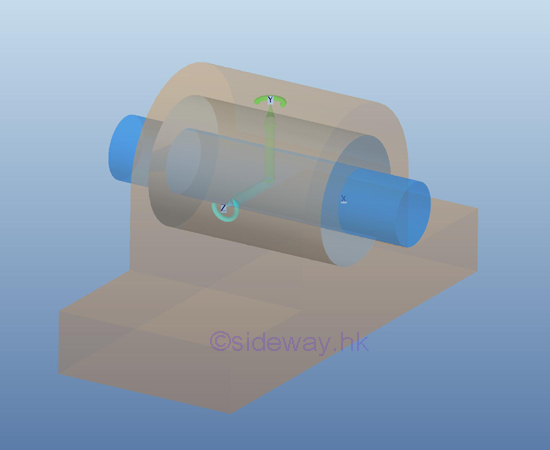

-
Reactions equivalent to two force components
For a free roller support or connection, the rotational motion in one dimension is enabled by equipping with a roller with fictionless hinge or pin on rough surface or a rail, and the free rotational motion on other two dimensionsuonly two couple is allowed by the free end design. And therefore there is no couple reacted by the support or connection on the free body. Because there is a roller, the free translation is allowed along the rolling direction of the roller, and only two translational motion are stopped by the reaction force of the roller support on the rought surface or the rail.
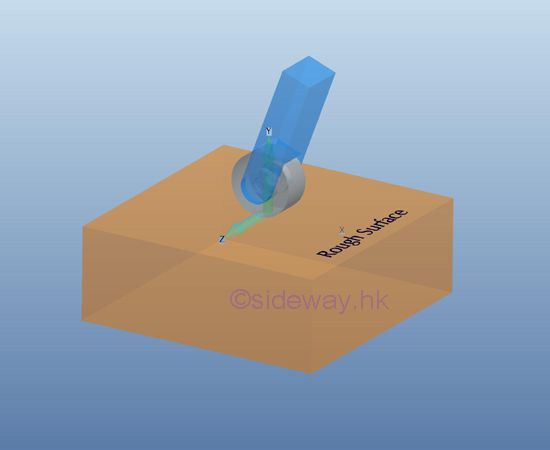
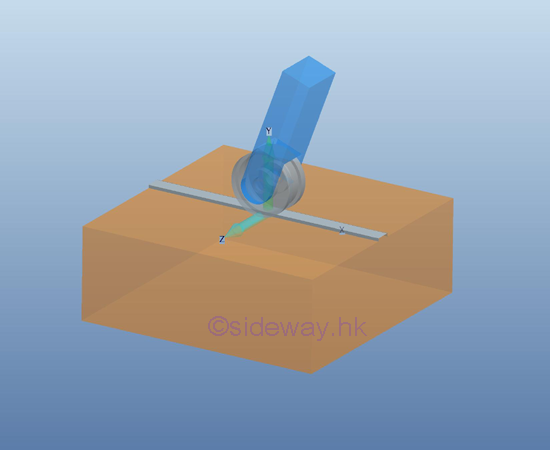
-
Reactions equivalent to one force components
-
For a ball support or connection
For a ball support, simulart to the ball and socket joint, the free rotational motion in three dimensions is enabled by equipping with a free spherial end on a surface as a point contact or a free end on a frictionless surface, no couple is reacted by the support or connection on the free body. Besides, the two translational motions in horizontal or lateral and longitudinal direction also also free to motion. Only the translational motion in vertial or normal direction is stopped by the reaction force of the supporting surface.
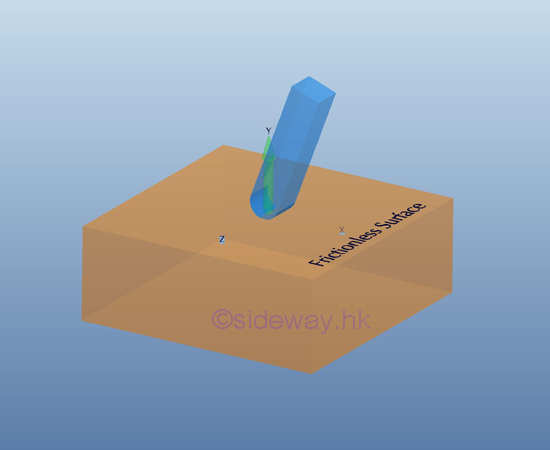
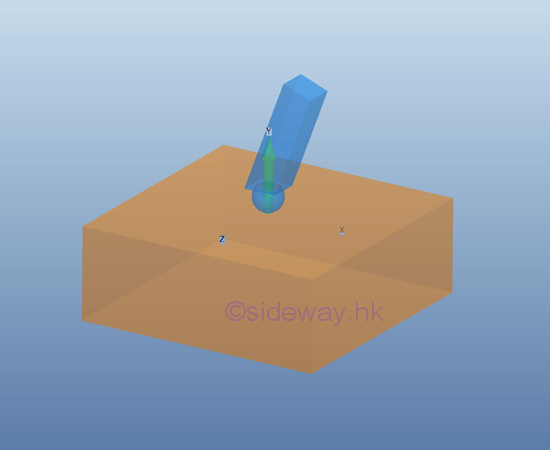
-
For free short cable support or connection
For a cable, the only possible reaction force is the tension of the cable. Therefore a free short cable provides only one constraint along the cable to the free body.
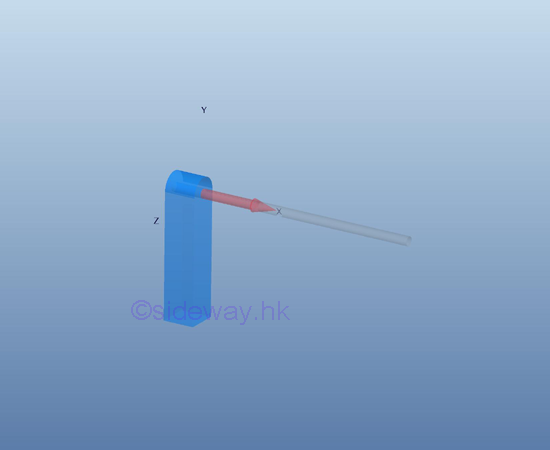
-
©sideway
ID: 120200065 Last Updated: 2/21/2012 Revision: 0 Ref:
References
- I.C. Jong; B.G. rogers, 1991, Engineering Mechanics: Statics and Dynamics
- F.P. Beer; E.R. Johnston,Jr.; E.R. Eisenberg, 2004, Vector Mechanics for Engineers: Statics
Latest Updated Links
- Panasonic SR-CK05 RiceCooker CW-HZ70AA(last updated On 11/17/2025)
- Panasonic Hood Structure Ventilating Fan Blade Diameter: 8in FV-20WH307 CW-HZ70AA(last updated On 11/16/2025)
- Panasonic Window Mount Thermo Ventilator FV-30BW2H CW-HZ70AA(last updated On 11/15/2025)
- Panasonic Inverter PRO Inverter Window Heatpump Air-Conditioner (3/4 HP) CW-HZ70AA(last updated On 11/14/2025)
- Panasonic Inverter Window-Split Type Cooling Only Air-Conditioner (1 HP) CS-U9YWA(last updated On 11/13/2025)
- Panasonic Inverter Steam and Grill_Microwave Oven 27L NN_DS59NB(last updated On 11/12/2025)
- Panasonic KY-C223B Induction Cooker(last updated On 11/11/2025)
- Focus M41 Single lever kitchen mixer 160(last updated On 11/10/2025)
- Focus Single lever basin mixer 230(last updated On 11/9/2025)
- Precision Start Thermostat shower mixer(last updated On 11/8/2025)
- Tempesta 100 Shower Rail Set 3 sprays(last updated On 11/7/2025)

 Nu Html Checker
Nu Html Checker  53
53  na
na  na
na
Home 5
Business
Management
HBR 3
Information
Recreation
Hobbies 8
Culture
Chinese 1097
English 339
Travel 18
Reference 79
Hardware 40
Computer
Hardware 259
Software
Application 213
Digitization 37
Latex 52
Manim 205
KB 1
Numeric 19
Programming
Web 289
Unicode 504
HTML 66
CSS 65
SVG 46
ASP.NET 270
OS 431
DeskTop 7
Python 72
Knowledge
Mathematics
Formulas 8
Set 1
Logic 1
Algebra 84
Number Theory 206
Trigonometry 31
Geometry 34
Calculus 67
Engineering
Tables 8
Mechanical
Rigid Bodies
Statics 92
Dynamics 37
Fluid 5
Control
Acoustics 19
Natural Sciences
Matter 1
Electric 27
Biology 1
